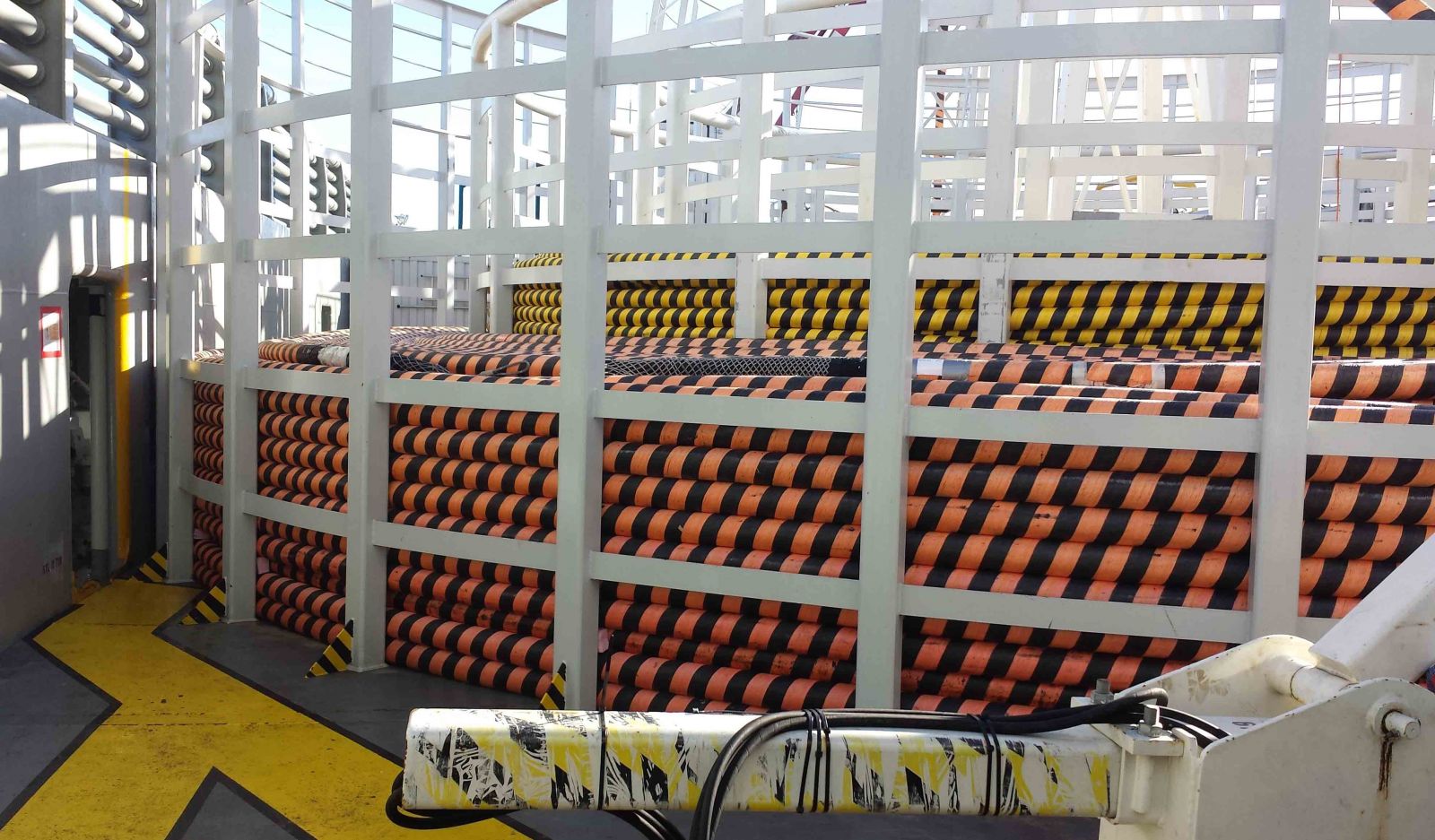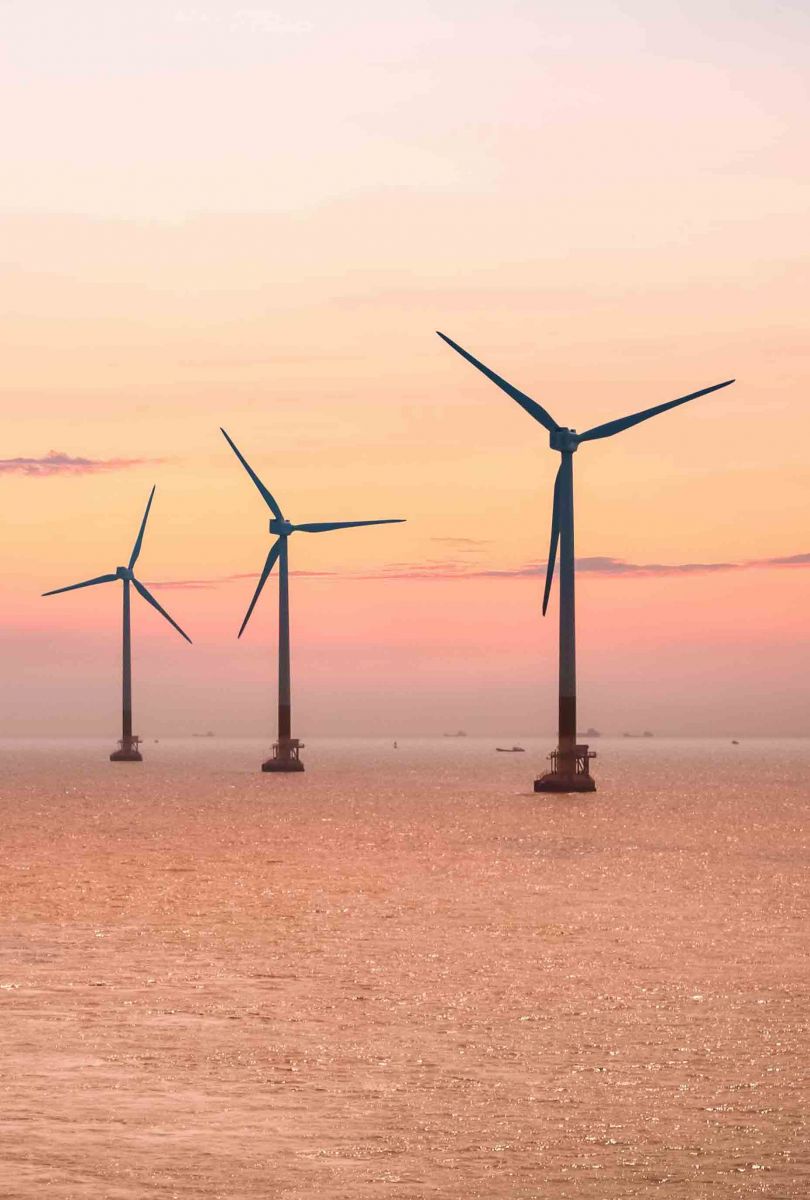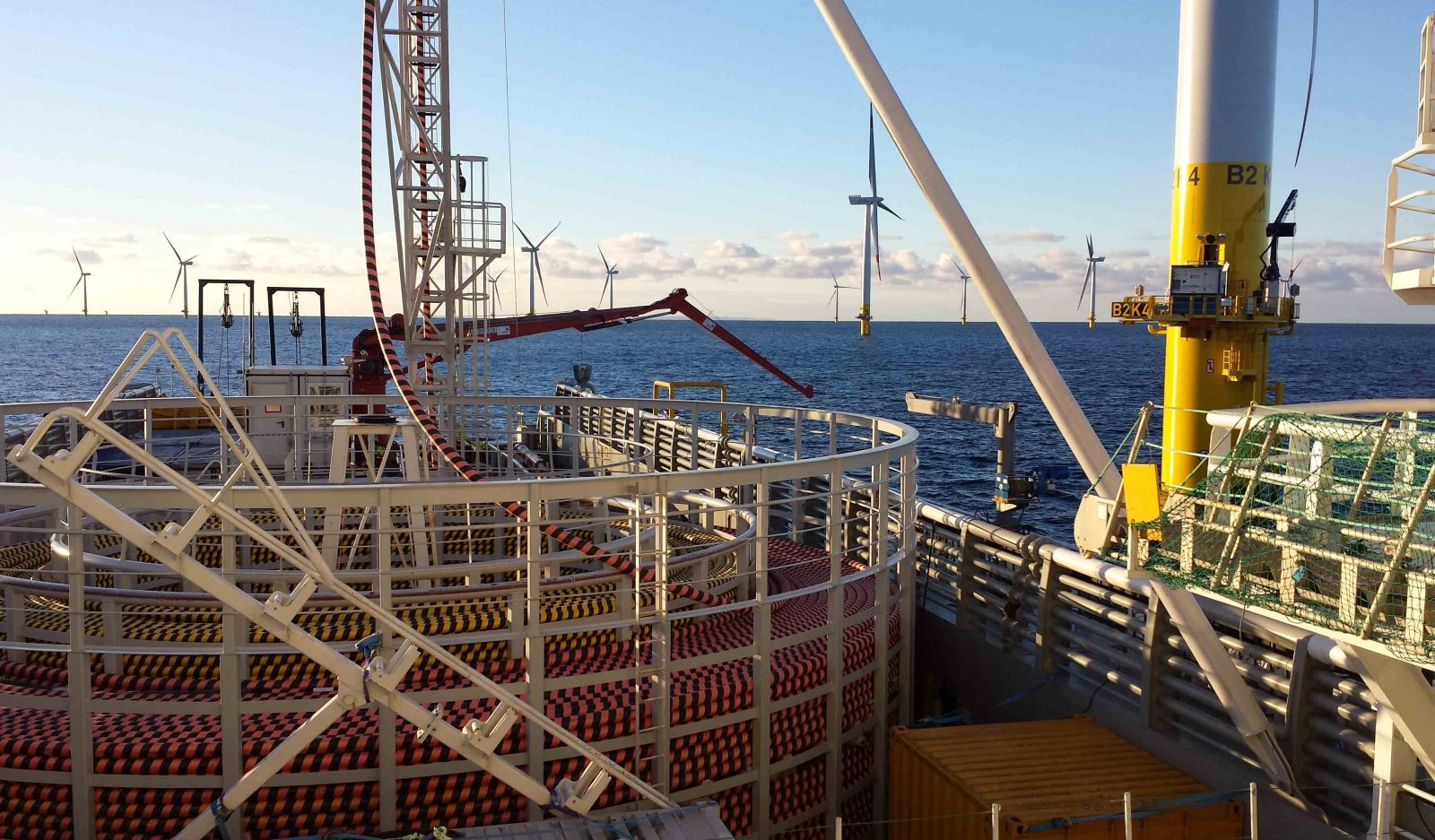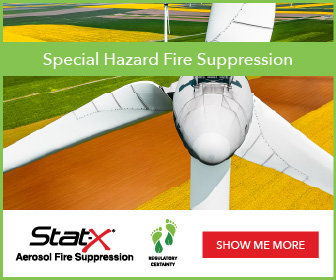US Offshore Wind Outlook
Energy generated by wind turbines is a sustainable resource that can produce enough electricity to power major cities around the world. Lately, the focus has shifted to offshore wind power, where large farms of wind turbines are installed in bodies of water (usually the ocean) to take advantage of higher and more consistent wind speeds. This helps to generate substantially more electricity than onshore wind turbine facilities.

Historically, the US hasn’t been that invested in offshore wind power. But that is changing as the 2021 Infrastructure Bill is making bold investments in clean energy. As of today, there are only two offshore wind projects operating in the US, one of which is a small pilot project. However, there are plans to develop many more in the coming years, both on the east and west coasts. In fact, only a few months ago we celebrated the ground breaking of South Fork Wind, a 130-megawatt (MW) wind farm off the coast of Long Island that will produce enough energy to power 70,000 homes and displace six million tonnes of carbon dioxide. South Fork Wind is expected to be in service by the end of 2023.
As the energy industry embraces offshore wind as a viable—and reliable—source of clean power, let’s look at some of the key considerations for developing these kinds of projects.
Procuring vital offshore transmission cables—and protecting them
An important consideration in the development of offshore wind is the procurement and protection of the cables needed to transmit the power into the onshore power grid.
Several factors need to be considered when selecting appropriate transmission technology and optimizing efficiency and costs. These include the distance from shore, amount of power, and ultimate development scenarios for offshore wind in the area. High voltage direct current (HVDC) technology can transmit larger amounts of power over longer distances with lower losses, as compared to high voltage alternating current (HVAC) cables. Submarine and underground cables are required for transmitting power from the wind farms, no matter which technology is chosen.
 Currently, cable manufacturers worldwide are operating at full capacity due to the high demand for power cables. The demand is not just for offshore wind farms, but also for transmission development and the integration of renewables in general. This means that procuring the cable systems for wind farms can take longer than usual. So, it’s important to engage project developers and cable manufacturers early in the process. This way both parties are aware of timelines and able to plan out the project accordingly.
Currently, cable manufacturers worldwide are operating at full capacity due to the high demand for power cables. The demand is not just for offshore wind farms, but also for transmission development and the integration of renewables in general. This means that procuring the cable systems for wind farms can take longer than usual. So, it’s important to engage project developers and cable manufacturers early in the process. This way both parties are aware of timelines and able to plan out the project accordingly.
Because the offshore wind cables take longer to procure, it makes them even more critical to protect. Cables can also be very costly to repair. It’s not just the price to repair the cables, but also the lost revenue from the outage. It can take months to repair or replace a damaged cable, so implementing measures to protect them is very important.
One mitigation measure for protecting cables from damage is burying them in the sea bed. This is done using either simultaneous lay and burial, or post lay burial techniques. This helps to reduce damage from anchors, fishing gear, and dredging. The specific protection measures should be evaluated during the design phase of the project.
Installing cables while protecting the environment
It’s not just about protecting the cables, but also about protecting the environment. When installing cable systems, it’s critical to mitigate impacts to the surrounding environment by reducing disruptions to the sea floor, sensitive coastal environments, and marine life.
Burying cables will create a temporary disturbance of the sea bed. During the permitting process, the species and plants that live on the sea floor need to be documented, and the design and installation of the offshore wind farm must minimize impacts on the marine life. Environmental impacts must also be minimized throughout installation and design, such as any installations in high erosion areas.
Offshore wind projects must also consider avoiding sensitive habitats wherever possible, both offshore and onshore. This is where the use of horizontal directional drilling (HDD) comes into play for landing points and onshore installation. HDD helps to avoid sensitive shoreline resources and habitats by drilling below them. That way, when the cables reach the shoreline, they won’t just be running up and along a beach; they’ll be buried under the shoreline to ensure no disruption to the surrounding environment.
Cable installation must also account for other ocean uses such as fishing interests, sand borrow areas, artificial reefs, and navigation channels. Burial must be at sufficient depth in or around these areas to mitigate potential impacts.
As you can see, a lot of consideration goes into how cable systems are designed. Protecting the cables and protecting the environment must go hand-in-hand.

Barriers facing the offshore wind industry
While we are witnessing the development of more offshore wind projects in the US, we are still seeing several barriers facing the industry. An expensive price tag is not the only challenge that offshore wind projects face. Apart from the harsh offshore conditions that require equipment designed to withstand extreme weather, another challenge is connecting the power into the onshore grid. Foresight, good planning, integrated engineering/environmental evaluation, and efficient design are all critical success factors.
Permitting and environmental hurdles to offshore wind in the US also exist. In order for offshore wind projects to obtain permitting approvals, rigorous environmental and engineering studies need to be done. These studies must demonstrate that the selected design, route, and installation methods minimize and mitigate adverse environmental impacts.
The intermittent nature of offshore wind power—not unlike most renewables such as solar power—is also often brought up as a concern. Critics question the effects that offshore wind has on the grid, as well as the ability to regularly meet our fluctuating electricity demands. In reality, offshore wind and solar power can work together to help with these fluctuations.
The integration of renewable power generation, which relies on electronics to interface with the power grid, is changing the nature of the electrical grid. Transmission planners, operators, and developers need to consider these changes and upgrade the transmission system accordingly. This is critical to maintaining the reliability of the power system, given the significant increase of renewables that is expected in the future.
As experience grows and new technologies come into play, we will learn more about balancing the grid, and begin to focus on the numerous benefits offshore wind power can provide.
A greener future with offshore wind
Although there are several challenges to these bold projects, investment in offshore wind energy is still very important. Why? Because offshore wind can help guide us through the energy transition, and lead us to a cleaner energy future. Exciting developments we are seeing in the industry include:
- Further development of HVDC systems using equipment and control systems from multiple vendors, making multi-terminal HVDC systems and HVDC grids more viable and more economic.
- Improvements in manufacturing technology and capacity, as well as cable installation vessel equipment, to support the development of more projects.
- The extension of the onshore grid to create integrated points of interconnection at wind energy areas. This will help reduce connection costs and improve the overall reliability of offshore wind.
- The development of new cable designs using improved insulating compounds that support higher voltages and currents. This will increase the amount of power that can be exported on a cable circuit and lead to cost efficiencies.
- The increased use of HVDC systems to facilitate larger wind farms located farther from the shore.
- The development of higher voltage dynamic cables to support the growth of floating offshore wind in deeper waters.
- Technology advances in wind turbine designs leading to each individual wind turbine being able to generate more power (the current maximum is 15 MW per turbine).
As we head forward, it will be interesting to watch the offshore wind industry grow and evolve in the US. And, if the US is truly committed to reaching 30 gigawatts of offshore wind power by 2030, we should see many more wind turbines being installed offshore in the coming years.


Phaedra Taiarol (left) is a Supervising Engineer, and Mark Stobart (right) is a Product Engineer at Stantec, which provides integrated and innovative solutions to help our clients adapt and advance as they transform to the new reality of a lower-carbon future.
Stantec | www.stantec.com
Author: Phaedra Taiarol and Mark Stobart
Volume: 2022 September/October











